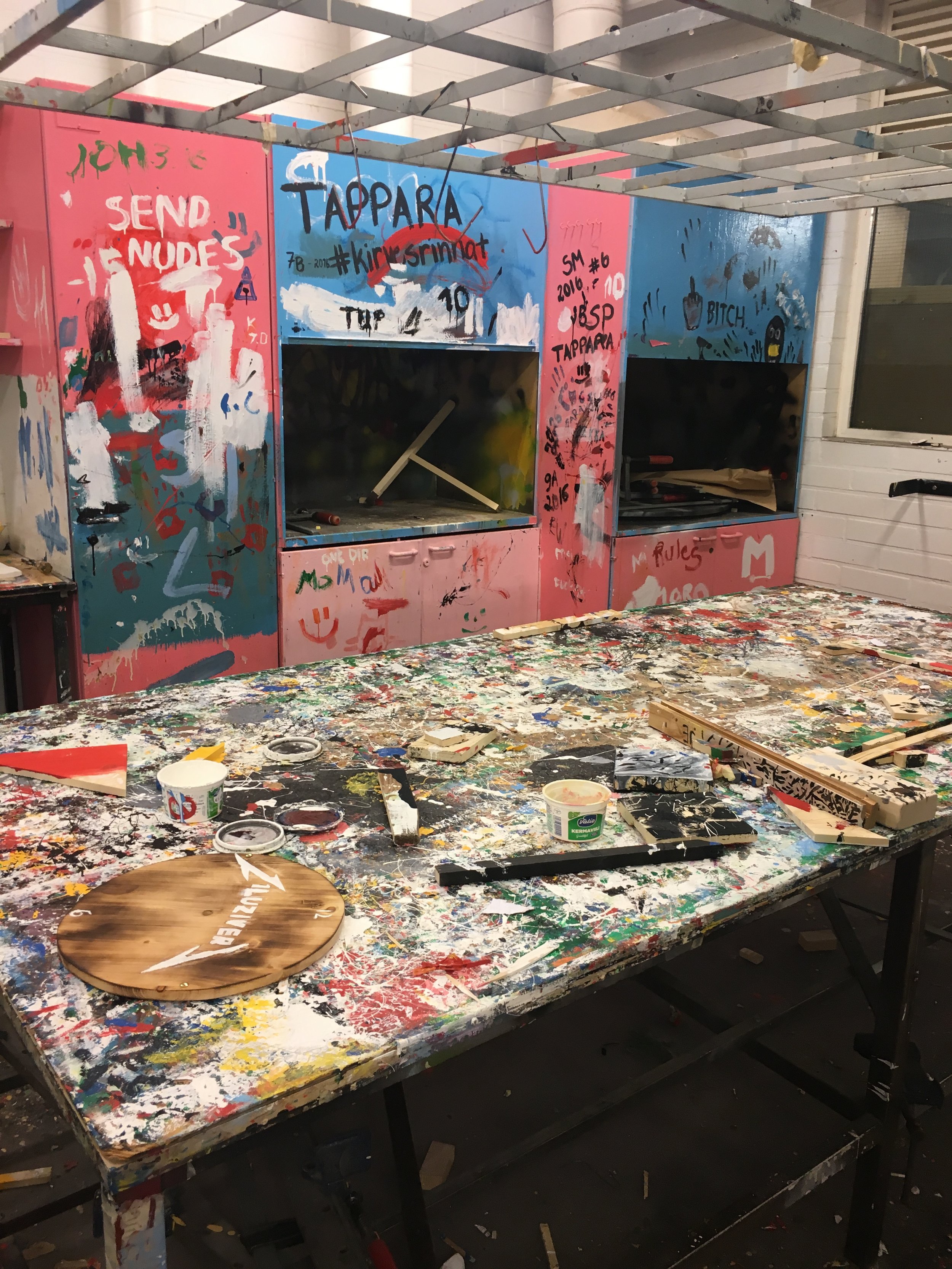The first stop in the schools tour was a Comprehensive Basic Education Primary school in the suburbs of Tampere. There are about 900 students in grades 1-9. In Finland, grade 1 starts when the student is 7. So the students at the school ranged from age 7 to 16. This is the only compulsory education in the nation. However, all of the population are encouraged to continue learning (always for free) throughout life. In fact, at Hervanta, they had a JOPO course which is designed to assist students who are considered "drop-outs"--the 5% of the student population who do not go on to secondary education. This school was also notable for its multicultural student population. Fourteen languages are represented in the school and 30% are an immigrant population. Our student guides were from Kosovo and Iraq.
Impressions of the school: The classes were largely very small. In the Home Economics, Crafts class (we would call it wood shop), and the Physics class there were only 12-13 students. In the general content classes, students stayed together with a general education teacher for much of their schooling. These classes were larger.
In the 7th grade (our 14 year olds) students had several classes that were offered in three-hour blocks. The daily schedule was variable and flexible. The three hour sessions included the home economics and the wood shop classes. Later we were told that most Finns are quite handy and generally handle their own repairs, one can assume from this emphasis on taking care of the basics in school. In the wood shop class students were making a large ladle used for pouring water on the sauna, a clock, or a candle holder--their choice. The home economics students were baking something similar to brownies. The tables were set and everyone had their shoes off.
The school itself relies heavily on student responsibility for its management. Students take a fifteen minute break after 45 minute lessons--and everyone goes outside for one break in the afternoon--no matter what. We saw students of all grades mingling in the hallway. And, yes, they had cellphones which did not appear to be a major distraction in the classroom. Additionally, the students went to and from the lunch un-managed by adults. But, because the lunch is free and offered to all the students, the faculty also ate at the same time but were unconcerned with student behavior. The same menu was offered to all, was cooked on site (from real food!), and offered gluten-free, lactose free, and vegan versions of the day's menu. There were no sweets or processed foods offered. We, the adults, had a coffee break during the first student break and pastries were available then.
Students walked to school. In some classes, shoes were not allowed, so children moved around in stocking feet. Some ride bikes. It was 20 degrees when we were there. Some students ride bikes even in that weather. BTW, there was snow and ice everywhere and all were in school.
Emphasized throughout the visit was the autonomy of the teachers to make decisions about instruction in their classrooms--though we did not see any instructional methods we would not be familiar with in our schools. Students in the grade 1 class we visited were reading from a basal, for instance. The maths class was working in cooperative groups. The 6th grade class (our 8th graders) described a unit they had done in the previous year where they constructed their own cardboard castle.
In addition to their teaching duties, all teachers participate on committees--generally of their choice--that do some school wide planning. At Hervanta, for instance, the 6 year students always take a trip to London. They spend the earlier years raising money for this trip so that everyone can go. The administrative team consisted of three adults. These people act as managers of the building. It did not seem that any of them interfered with the instructional practices of the teachers.
So what makes the Finnish schools so strong? There are many factors. First, the way schools are funded. The nation funds the schools and more money goes to higher needs areas--not property taxes. Equity is a primary focus. Secondly, though students get the traditional teacher created tests, there are no standardized tests. Third, the children spend their early years in training around social and emotional management. Though it is not required, most 6-year-olds go to the pre-school and are given extensive education in this area so they are ready to care for one another and manage their differences. The school has a nurse, a doctor, a psychologist, and a dentist on site all day.
It makes a difference when these factors are in place.
Hallway
No shoes at lunch.
The painting room in shop.


